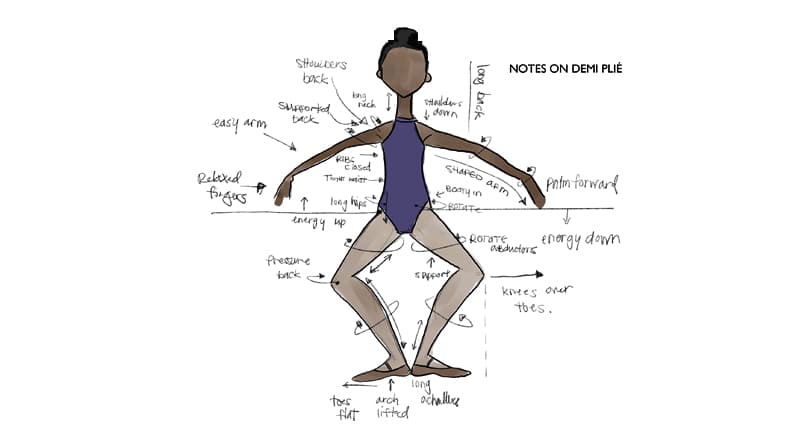The Art of Making Corrections in Dance
Corrections, as dancers you need to deal a lot with them. Constructive criticism or a straight comment, helpful or confusing you, somehow you need to find your way of incorporating the given correction into your dancing. Understanding how to process the information in the right way may depend on the manner someone corrects you.
To be able to understand our teacher, you first need to know how you learn. Everybody has their own preference of learning: are you a person who likes to observe and reflect before actually trying the given correction? Or do you prefer to just throw yourself in the material and think afterwards what did (not) work? Some people first want to see and analyze before they try, although others prefer to experience by doing. It might get complicated for your brain when a teacher asks you to “just try”, while you are still analyzing the movement material.
Next to this aspect of processing corrections, also with which sense the exercise is offered is of great importance. For some people it is the easiest to understand an instruction by hearing: “please don’t make chicken wings, keep your elbows up”, when you are holding your arms in second position during a ballet class. Others prefer visual corrections, whereby the teacher shows for example two versions of your arms in second position and you need to choose the “right” one. But also understanding by touch, the teacher guiding your elbow up, is a common way to process information. If you are a person who likes to get the reason behind the correction, keeping your elbows up to support your back to get a stable position to perform the legwork in a proper way, you like to logical side of explanations. Some people have a clear preference of one of these styles, others may like more options.
Don’t understand me wrong, you nor your teacher is doing something incorrectly. All the methods I explained above are great ways to correct/be corrected. Realizing this difference will help you to understand each other.
For teachers: alternate your methods of correcting and estimate your students to find out in which way they understand you best.
Students: find out yourself which method(s) has/have your and your teacher’s preference. When you know your style of perceiving information, you might notice it is not the same as your teacher’s. In this way you can try to translate the correction to your style of learning, or try to develop an other method of learning.
Because everyone can develop other methods!
—
A special thanks to https://aballeteducation.com/ for giving permission to use the featured image.
- The Art of Making Corrections in Dance - May 21, 2017

